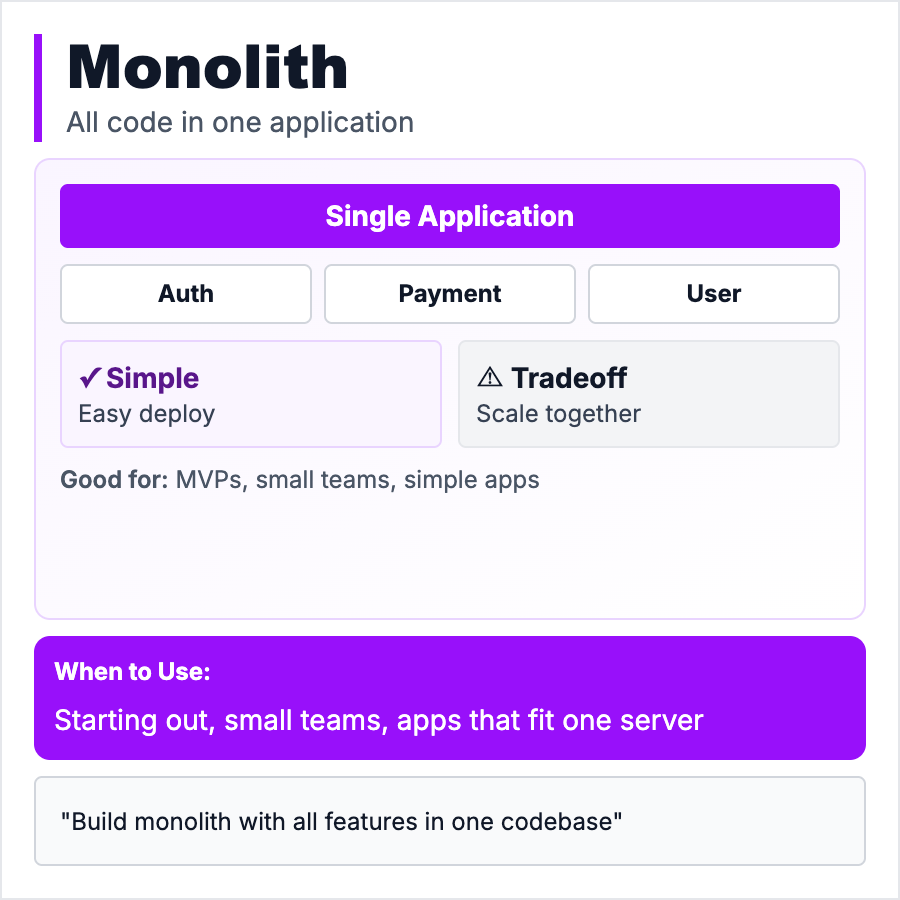
What is Monolith Architecture?
Monolith Architecture means your entire application runs as a single unit—one codebase, one database, one deployment. Opposite of microservices (split into many services). Monoliths are simpler: easier to develop, test, deploy, debug. Most successful startups started as monoliths—Shopify, GitHub, Basecamp still run monoliths. "Modular monolith" (well-organized code) scales better than poorly-designed microservices. Only move to microservices when monolith becomes painful.
When Should You Use This?
Start with a monolith for every new project. It's simpler, faster to build, easier to reason about. Keep monolith until you have 20+ engineers, clear service boundaries, or different scaling needs per component. Well-designed monoliths can serve millions of users (Shopify, Stack Overflow). Only split when organizational or technical constraints force it. Microservices are for scale problems, not first principles.
Common Mistakes to Avoid
- •Premature microservices—adds complexity before you have scale problems
- •Spaghetti code—monolith works if code is modular, fails if everything touches everything
- •Assuming monolith can't scale—Shopify handles Black Friday traffic with monolith
- •Not planning modules—organize by domain (users, payments, inventory) even in monolith
- •Fearing deployment—modern tools deploy monoliths quickly, not a real issue
Real-World Examples
- •Shopify—Monolith handles billions in GMV, serves millions of merchants
- •GitHub—Monolith for most of product, only split specific services later
- •Basecamp—Proudly monolith, simple architecture serves millions
- •Stack Overflow—Monolith serves billions of pageviews/month
Category
System Design Patterns